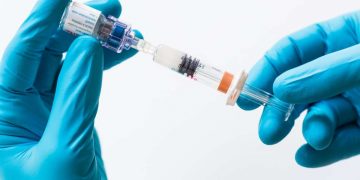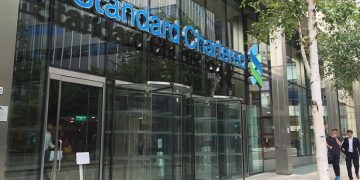 Did you know that acne bacteria produce fluorescent porphyrins that glow under special lighting, helping doctors track treatment progress? Acne forms when hair follicles clog with oil, dead skin cells, and bacteria, creating a breeding ground for Cutibacterium acnes. A facial acne treatment Singapore targets these causes by reducing oil, speeding up skin cell turnover, eliminating bacteria, and controlling inflammation. Treatment choice depends on acne type, comedonal (blackheads/whiteheads), inflammatory (red papules/pustules), or cystic (deep, painful nodules) as each responds differently, from topical retinoids to combination therapies or isotretinoin.
Did you know that acne bacteria produce fluorescent porphyrins that glow under special lighting, helping doctors track treatment progress? Acne forms when hair follicles clog with oil, dead skin cells, and bacteria, creating a breeding ground for Cutibacterium acnes. A facial acne treatment Singapore targets these causes by reducing oil, speeding up skin cell turnover, eliminating bacteria, and controlling inflammation. Treatment choice depends on acne type, comedonal (blackheads/whiteheads), inflammatory (red papules/pustules), or cystic (deep, painful nodules) as each responds differently, from topical retinoids to combination therapies or isotretinoin.
Table of Contents
Understanding Your Acne Type
Comedonal Acne
Comedones form when keratin and sebum create plugs within follicles. Open comedones (blackheads) occur when the plug remains open to air, causing oxidation that creates the dark appearance. Closed comedones (whiteheads) develop when skin covers the follicular opening, trapping material beneath. These non-inflammatory lesions concentrate in the T-zone where sebaceous glands are most active.
Treatment focuses on normalizing cellular turnover and preventing follicular plugging. Salicylic acid penetrates oil-filled pores, dissolving keratin plugs. Retinoids increase cellular turnover rates, pushing out existing comedones while preventing new ones. Clay masks absorb excess sebum without over-drying, particularly beneficial for oily T-zones.
Inflammatory Acne
Inflammatory acne occurs when comedones rupture beneath the skin surface, releasing cellular debris that triggers immune responses. Papules appear as small, red bumps without visible pus, while pustules contain white or yellow centers. This inflammation damages surrounding tissue, potentially causing post-inflammatory hyperpigmentation (PIH) that persists months after lesions heal.
Benzoyl peroxide eliminates acne bacteria through oxidative mechanisms while reducing inflammation. Azelaic acid provides dual antimicrobial and anti-inflammatory benefits. Niacinamide reduces inflammation while strengthening the skin barrier. A healthcare professional can determine appropriate concentrations and usage guidelines for these treatments.
Cystic and Nodular Acne
Cystic lesions form deep within the dermis when severe inflammation creates pus-filled cavities. Nodules develop as solid, painful lumps without visible heads, often merging to form interconnected channels beneath the skin. Both types cause significant tissue destruction, frequently resulting in atrophic (depressed) or hypertrophic (raised) scars.
These severe forms require medical intervention. Oral antibiotics like doxycycline can reduce bacterial load and inflammation. Isotretinoin is an effective treatment for normalizing sebum production, cellular turnover, and bacterial colonization. Intralesional corticosteroid injections can rapidly shrink individual cysts, potentially preventing scarring from particularly large lesions. Treatment decisions and dosing should be determined by a qualified healthcare professional.
Modern Treatment Approaches
Chemical Peels
Chemical peels accelerate exfoliation through controlled acid application, removing damaged surface cells while stimulating collagen production. Glycolic acid peels (20-70% concentration) penetrate evenly, improving texture and reducing comedones. Treatment begins with lower concentrations, gradually increasing based on skin tolerance. Neutralization occurs after 2-5 minutes, depending on frost development and patient comfort.
Salicylic acid peels (20-30%) specifically target acne through lipophilic properties that allow deep pore penetration. The acid dissolves intercellular connections between keratinocytes while reducing sebum production. White crystallization indicates adequate penetration, typically occurring within 3-5 minutes. Monthly treatments over 3-6 sessions may achieve results.
Mandelic acid offers gentler exfoliation suitable for sensitive or darker skin types. Its larger molecular size slows penetration, reducing irritation while maintaining efficacy against acne bacteria. Jessner’s solution combines salicylic acid, lactic acid, and resorcinol, creating synergistic effects particularly effective for inflammatory acne.
Laser and Light Therapies
Blue light therapy (415nm wavelength) activates porphyrins within *C. acnes*, generating reactive oxygen species that destroy bacteria. Sessions last 15-20 minutes, performed twice weekly for 4-6 weeks. Red light (630-700nm) penetrates deeper, reducing inflammation and promoting healing. Combined blue-red light protocols address both bacterial and inflammatory components simultaneously.
Pulsed dye lasers target hemoglobin in inflamed lesions, reducing redness while destroying feeding blood vessels. Settings typically use 585-595nm wavelengths with 6-10 J/cm² fluence and 0.5-6ms pulse duration. Purpura-free parameters minimize downtime while maintaining efficacy. Treatment intervals of 2-4 weeks allow complete healing between sessions.
Fractional CO2 lasers create microscopic treatment zones, stimulating collagen remodeling that improves acne scarring. Density settings of 5-20% with depths of 300-1000 microns balance efficacy with recovery time. Pre-treatment with tretinoin for 2-4 weeks enhances results. Post-treatment care includes occlusive moisturizers and strict sun protection during the 5-7 day healing period.
Did You Know?
Acne bacteria produce fluorescent porphyrins that glow orange-red under Wood’s lamp examination, allowing dermatologists to assess bacterial colonization levels and monitor treatment progress.
Photodynamic Therapy
Photodynamic therapy combines photosensitizing agents with specific light wavelengths to selectively destroy sebaceous glands and acne bacteria. Aminolevulinic acid (ALA) application for 30-60 minutes allows selective uptake by metabolically active cells. Red light activation (630nm) generates singlet oxygen, causing targeted cell destruction while sparing surrounding tissue.
Modified PDT protocols using shorter incubation times (15-30 minutes) or diluted ALA concentrations reduce side effects while maintaining efficacy. Some protocols incorporate blue light activation for enhanced antibacterial effects. Post-treatment photosensitivity requires strict sun avoidance for 48 hours.
Combination Therapies
Acne management often requires targeting multiple pathogenic factors simultaneously. Topical retinoids combined with benzoyl peroxide address both comedogenesis and bacterial colonization. Fixed-combination products improve adherence while reducing irritation through balanced formulations.
Chemical peels alternated with laser treatments may maximize improvement while allowing adequate recovery. Peels address surface concerns between deeper laser sessions targeting scarring or persistent inflammation. Oral medications supplement procedural treatments – spironolactone (25-100mg daily) reduces hormonal triggers while antibiotics control bacterial proliferation during initial treatment phases.
Maintenance protocols prevent recurrence after achieving clearance. Weekly salicylic acid treatments, monthly light therapy sessions, or quarterly chemical peels sustain results. Topical retinoids remain cornerstone maintenance therapy, preventing microcomedone formation that precedes visible lesions.
Ingredients That Make a Difference
Retinoids and Retinol
Tretinoin (0.025-0.1%) normalizes follicular keratinization while reducing inflammation and promoting collagen synthesis. Application frequency should be determined by a healthcare professional to minimize retinization reactions – dryness, peeling, and temporary purging. Adapalene offers comparable effects with reduced irritation, making it suitable for sensitive skin.
Retinol requires conversion to retinoic acid within skin cells, providing gentler effects than prescription retinoids. Concentrations of 0.25-1% balance effects with tolerability. Encapsulated formulations provide sustained release, minimizing irritation while maintaining effectiveness. Time-release technologies allow higher concentrations without increased side effects.
Hydroxy Acids
Alpha-hydroxy acids (AHAs) dissolve intercellular cement between corneocytes, promoting exfoliation and improving texture. Glycolic acid’s small molecular size enables deep penetration, while lactic acid provides additional humectant properties. Appropriate concentrations and frequency of use should be determined by a healthcare professional.
Beta-hydroxy acid (salicylic acid) penetrates oil-filled pores, dissolving comedones from within. Its anti-inflammatory properties reduce redness associated with inflammatory acne. Leave-on formulations and cleansers are available at various concentrations.
Polyhydroxy acids like gluconolactone offer similar benefits with minimal irritation due to larger molecular size. These second-generation acids suit sensitive or compromised skin barriers often resulting from acne treatments.
Important Note
Combining multiple acids or using high concentrations without proper guidance can compromise skin barrier function, potentially worsening acne through increased inflammation and bacterial penetration. Consult a healthcare professional for appropriate treatment recommendations.
Professional vs At-Home Care
Clinical Treatments
Professional treatments use higher concentrations and equipment not available for home use. Medical-grade chemical peels use higher acid concentrations compared to consumer products. Professional application provides even coverage, timing, and neutralization.
Extraction procedures remove comedones using sterile technique and pressure to minimize tissue trauma. Tools like comedone extractors or ultrasonic devices facilitate removal while reducing scarring risk. Post-extraction protocols including LED therapy or antimicrobial masks may help prevent infection.
Injectable treatments address concerns – corticosteroids may help shrink cysts, while hyaluronic acid fillers may improve certain scar types. Platelet-rich plasma injections may stimulate healing and collagen production in scarred areas.
Home Skincare Optimization
Home routines involve consistent application of products in sequences. Morning routines focus on protection – gentle cleansing, followed by treatment serums, moisturizer, and broad-spectrum sunscreen. Evening routines emphasize treatment – double cleansing for makeup removal, followed by actives like retinoids or acids, then moisturizer.
Product layering follows the thinnest-to-thickest approach, allowing absorption. Water-based serums precede oil-based treatments. Active ingredients require absorption time before applying subsequent products. Buffering techniques – applying moisturizer before strong actives – may reduce irritation for sensitive skin.
Weekly treatments supplement daily routines. Clay masks absorb excess oil, enzyme masks provide gentle exfoliation, and hydrating masks restore barrier function. Alternating treatment types prevents over-exfoliation while addressing multiple skin concerns.
Preventing Future Breakouts
Skincare Routine Essentials
Consistent cleansing removes accumulated oil, dead cells, and environmental pollutants that contribute to pore blockage. Gel or foam cleansers containing salicylic acid or benzoyl peroxide provide ongoing treatment benefits. Double cleansing – oil cleanser followed by water-based cleanser – thoroughly removes sunscreen and makeup without stripping natural oils.
Non-comedogenic moisturizers maintain barrier function without clogging pores. Gel-cream textures suit oily skin, while ceramide-rich formulations repair compromised barriers from acne treatments. Hyaluronic acid provides hydration without heaviness, particularly important when using drying acne medications.
Sunscreen prevents post-inflammatory hyperpigmentation from darkening and protects photosensitized skin during acne treatment. Mineral formulations containing zinc oxide provide anti-inflammatory benefits while protecting against UV damage. Lightweight, fluid textures prevent pore occlusion associated with heavier formulations.
Lifestyle Modifications
Diet influences acne through multiple mechanisms including insulin signaling, inflammation, and hormone regulation. High-glycemic foods trigger insulin spikes that increase sebum production and keratinocyte proliferation. Dairy products contain hormones and bioactive molecules that stimulate oil glands. Omega-3 fatty acids from fish oil reduce inflammatory mediators involved in acne pathogenesis.
Stress activates the hypothalamic-pituitary-adrenal axis, increasing cortisol and androgen production that stimulate sebaceous glands. Regular exercise, adequate sleep, and stress management techniques help regulate hormone levels. Mindfulness practices reduce stress-induced inflammation markers.
Environmental factors significantly impact acne development. Pillowcases accumulate oil and bacteria, requiring twice-weekly washing. Phone screens harbor bacteria that transfer during calls – regular disinfection and hands-free options reduce exposure. Hair products containing oils or silicones migrate to facial skin, blocking pores along the hairline.
Quick Tip
Apply hair products before facial skincare, then use a headband during application to prevent product migration. Cleanse the hairline thoroughly during face washing to remove residual styling products.
What Aesthetic Doctors Say
Acne treatment requires patience and systematic approach rather than aggressive intervention. Initial worsening often occurs during the first 4-6 weeks as deeper lesions surface – this “purging” indicates treatment effectiveness rather than failure. Combining treatments targeting different mechanisms may achieve better results than maximizing single modalities.
Scar prevention through early, appropriate treatment proves more effective than attempting correction later. Even mild acne may warrant intervention when scarring tendencies exist. Dark marks (post-inflammatory hyperpigmentation) differ from true scars – PIH fades over months while scars represent permanent structural changes requiring procedural intervention.
Treatment adjustments based on hormonal fluctuations may optimize outcomes. Many patients require stronger interventions during luteal phase when progesterone increases sebum production. Tracking breakout patterns relative to menstrual cycles helps predict and preemptively address cyclical flares.
Putting This Into Practice
- Map your breakout patterns by photographing your skin weekly from consistent angles and lighting, noting lesion types, locations, and potential triggers to identify patterns that may inform treatment discussions with a healthcare professional
- Patch test new products on your jawline for 3-5 days before full-face application, monitoring for irritation, comedone formation, or allergic reactions
- Consider creating a treatment calendar alternating active ingredients – retinoids Monday/Wednesday/Friday, chemical exfoliants Tuesday/Thursday, recovery focus weekends, as advised by a skincare professional
- Document product combinations that cause irritation or improvement, including specific active ingredients, concentrations, and application sequences
- Establish consistent morning and evening routines with built-in flexibility for skin condition changes, such as reducing actives during barrier compromise, with guidance from a qualified professional
When to Seek Professional Help
- Cystic lesions larger than 5mm that remain painful after several days
- Scarring development including ice pick, boxcar, or rolling scars
- Dark marks persisting beyond three months despite consistent sunscreen use
- Acne unresponsive to over-the-counter treatments after 6-8 weeks
- Painful nodules forming interconnected channels beneath skin
- Sudden adult-onset acne or dramatic worsening of existing acne
- Psychological distress affecting daily activities or social interactions
Commonly Asked Questions
How long before I see results from new acne treatments?
Initial improvements typically appear after 4-6 weeks, with significant changes at 12 weeks. Prescription retinoids may cause temporary worsening during weeks 2-4 as deeper lesions surface. Complete clearance often requires 3-6 months of consistent treatment, with maintenance therapy continuing indefinitely to prevent recurrence.
Can I use multiple acne treatments simultaneously?
Combining treatments targeting different mechanisms may be beneficial – for example, morning benzoyl peroxide with evening retinoid application. However, using multiple exfoliants or drying agents simultaneously may compromise barrier function. Start with one active ingredient, establish tolerance over 2-4 weeks, then gradually introduce additional treatments under healthcare professional guidance.
Why does my acne worsen during certain times of the month?
Progesterone levels increase during the luteal phase (approximately days 14-28), stimulating sebum production and promoting inflammation. Testosterone remains relatively constant while estrogen drops, creating an androgenic environment favoring acne development. Adjusting treatment intensity during this phase may help manage hormonal flares.
Should I avoid moisturizer if I have oily, acne-prone skin?
Skipping moisturizer triggers rebound oil production as skin attempts to compensate for dryness. Dehydrated skin also heals slower and scars more readily. Choose lightweight, non-comedogenic formulations containing hyaluronic acid or glycerin that hydrate without adding oil.
How do I know if a product is causing breakouts?
New breakouts appearing 1-2 weeks after introducing a product suggest comedogenic ingredients. Immediate irritation indicates sensitivity rather than acne. Purging from active ingredients occurs only where you typically break out and resolves within 4-6 weeks, while product-induced acne appears in new areas and persists.
Next Steps
Effective acne treatment requires combining professional treatments with consistent home care protocols. Early intervention prevents scarring, while maintenance protocols sustain long-term results. Document your response patterns to optimize treatment selection.
If you are experiencing persistent comedones, inflammatory papules, cystic lesions, or acne scarring discussed in this article, consult an aesthetic doctor for comprehensive evaluation and personalized facial acne treatment plans.






